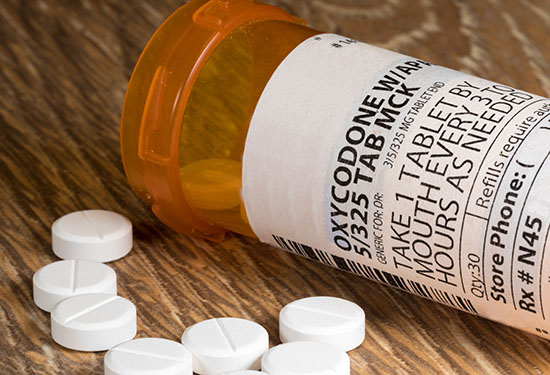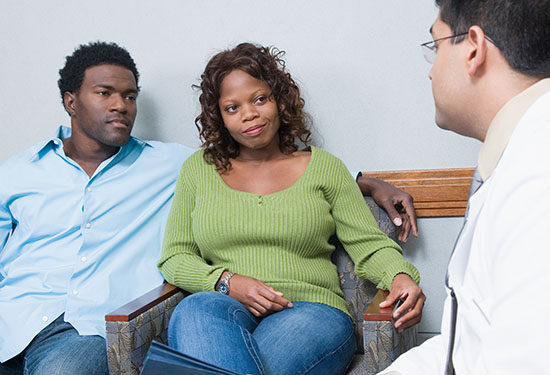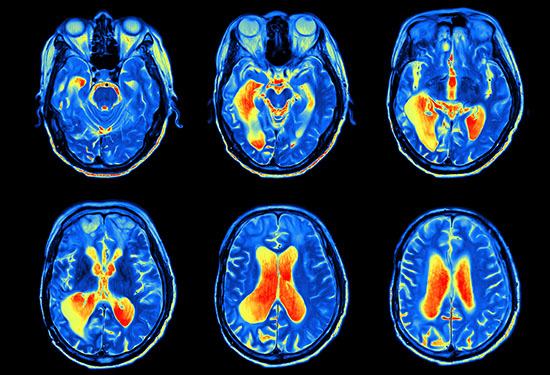 The Eunice Kennedy Shriver National Institute of Child Health and Human Development (NICHD) seeks to improve lifelong health by conducting and supporting research on physical and intellectual developmental disabilities, fertility, pregnancy, childhood diseases, and other vital areas.
The Eunice Kennedy Shriver National Institute of Child Health and Human Development (NICHD) seeks to improve lifelong health by conducting and supporting research on physical and intellectual developmental disabilities, fertility, pregnancy, childhood diseases, and other vital areas.
Over the past year, NICHD staff members contributed to numerous scientific advances and key initiatives. For instance, we are tackling the opioid epidemic by funding new research on opioid misuse during pregnancy. We are also leading the federal Task Force on Research Related to Pregnant Women and Lactating Women (a provision of the 21st Century Cures Act) to address knowledge gaps on safe and effective therapies for these groups.
As we head into 2018, I look forward to expanding our institute's activities in support of the health and well-being of infants, children, teenagers, and adults across the United States and around the world. The following are just a few examples of innovations made possible by our institute in 2017.
Best regards,
Diana W. Bianchi, M.D.
Director
NICHD
National Institutes of Health
Combatting the Opioid Crisis

Stock image of opioids
More than 90 people die every day from an opioid overdose in the United States, according to the Centers for Disease Control and Prevention. Opioid prescriptions in the United States have quadrupled since 1999, meaning large numbers of reproductive-age women are at risk of developing opioid use disorder and of giving birth to infants who are opioid-dependent.
In response to this crisis, NICHD brought experts together at a workshop to identify research gaps and opportunities to improve outcomes for families. The meeting summary was published in June and highlighted specific opioid-related needs regarding screening, treating, and caring for pregnant women and their infants.
In October, NICHD announced a new study—Advancing Clinical Trials in Neonatal Opioid Withdrawal Syndrome (ACT NOW)—that aims to inform clinical care of newborns experiencing withdrawal. The study is a collaboration between NICHD's Neonatal Research Network, which has more than 30 years of experience designing and implementing clinical studies involving infants, and the Institutional Development Award (IDeA) States Pediatric Clinical Trials Network, part of NIH's Environmental Influences on Child Health Outcomes program. The IDeA network focuses on rural and medically underserved communities, and many of the states within the network are reporting a high incidence of opioid withdrawal syndrome among newborns.
NICHD-supported researchers also published findings from two studies on the medications used to treat opioid use disorder in pregnant women. In January, one study noted different outcomes between pregnant women treated with buprenorphine versus methadone at a clinic in Boston. Women treated with buprenorphine had more prenatal care visits, a higher chance of delivering vaginally, and a lower risk of testing positive for illicit drugs after treatment began. These results underscore the complexity of selecting the most appropriate medication given a patient's disease severity, mental health, and recovery resources.
Findings from another study published in October suggested that pregnant women may need more frequent doses of buprenorphine to prevent cravings and improve adherence to treatment. Pregnancy changes a woman's metabolism, and drugs can pass through their bodies more quickly. While non-pregnant adults only need one dose a day, the study team found that a daily dose did not provide sufficient buprenorphine levels in pregnant women to allow for recovery. Instead, pregnant women may need three or four doses a day, but more research is needed to follow up on these results.
Promoting Women's Health

Stock image of women
NICHD research addresses the unique health issues and conditions of women. In March, NICHD-supported scientists published a new research tool, called EVATAR, that models the female reproductive system and menstrual cycle. The organ-on-a-chip system contains different sections that house cells from mice, such as the ovary and eggs, and human cells from the fallopian tube, uterus, and cervix. These sections are interconnected to allow more accurate mimicry of the human menstrual cycle, such as changes initiated by follicle-stimulating hormone, the release of eggs, and a pregnancy-like state. According to the researchers, EVATAR is designed to study the effects of drugs and may be reconfigured to model other organ systems.
In May, NICHD-supported researchers reported a 3D-printed synthetic ovary that contained egg-producing follicle cells. After the ovary was implanted in sterile mice, blood vessels formed around the synthetic ovary, allowing hormones to circulate. The implant enabled sterile mice to become pregnant after natural mating. The mice also produced milk and nursed their pups. When grown, the pups sired or gave birth to their own litters, indicating that future generations were healthy.
In October, an NICHD-supported study on urgency urinary incontinence, a potentially debilitating form of urinary incontinence, reported the effect of age on treatment outcomes. The researchers examined 6-month outcomes of a clinical trial that evaluated treatment with botulinum toxin or a sort of "pacemaker" that sends electrical signals to control the bladder. The team found that women in the trial had improved symptoms and quality of life regardless of age or treatment type. They also discovered that women under 65 years of age had greater achievement of continence and symptom improvement with lower urinary tract infections. The results should encourage women, regardless of age, to seek treatment for urinary incontinence.
Understanding Infertility and Fertility

Stock image of a couple and their doctor
Millions of men and women of reproductive age in the United States have trouble conceiving. In February, NICHD researchers reported that couples in which both partners are obese may take longer to achieve pregnancy, compared to non-obese couples. Although many studies on fertility and body composition have focused on women, the findings underscore the importance of accounting for both partners in infertility research. Furthermore, fertility specialists may want to consider couples' body compositions when counseling couples seeking treatment.
Also in February, NICHD researchers reported that a daily low-dose of aspirin may help some women with a history of miscarriage conceive and carry the pregnancy to term. In the study, women with high levels of C-reactive protein (CRP), a marker of inflammation, benefited from aspirin. Aspirin appeared to both increase the number of women with high CRP who became pregnant and reduce CRP levels. While more research is needed, the study highlights the potential influence of inflammation on fertility and pregnancy.
Later in the year, an NICHD-supported study found that a test routinely offered in fertility clinics fails to predict fertility. The test measures women's anti-Müllerian hormone levels, which naturally decrease with age. Low levels were thought to indicate lower numbers of remaining eggs and possible infertility. However, the study showed that women with low or normal levels of anti-Müllerian hormone had similar chances of conceiving. The findings suggest that women with low levels should not be anxious that they won't be able to have a baby.
NICHD also supports research on contraception, or birth control. Currently, men lack hormone-based drugs that can temporarily stop sperm production. In March, researchers funded by NICHD published findings on dimethandrolone undecanoate, a potential contraceptive for men. The study team developed three ways to package the drug as a capsule (powder in capsule, dissolved in oil, or in a self-emulsifying drug delivery system called SEDDS). Then, the team compared the drug properties, or pharmacokinetics, of these forms, including after a period of fasting or eating a high-fat meal (such work explores the timing of how a drug enters, remains, and is metabolized in the body). The study showed that all three versions suppressed male sex hormones in blood, even when taken with food. Overall, the findings improve the likelihood that a hormone-based drug will be developed for men.
Advancing Pregnancy and Newborn Outcomes

Stock image of a newborn in the hospital
Early and regular prenatal care is important during pregnancy, allowing healthcare providers to screen for and treat conditions that cause complications. For instance, extremely low thyroid function during pregnancy, a treatable condition, can increase the risk of preterm birth and miscarriage as well as impair a newborn's cognitive development. In March, NICHD-supported researchers reported that screening and treating pregnant women for a milder form of thyroid dysfunction, called subclinical hypothyroidism, was not beneficial because outcomes for mothers and children were similar between treated and untreated groups.
Improvements in care have also led to better outcomes for extremely premature infants. In February, an NICHD study reported that today's very early preterm infants are more likely to survive than in previous years, and the survivors are less likely to have neurological problems. The study offers important information for physicians and family members planning care for extremely fragile newborns born between the 22nd and 24th week of pregnancy, which is far earlier than the 39 weeks generally expected for a pregnancy to reach full term.
The health of newborns also depends in part on their microbiome—the communities of bacteria and microorganisms found inside and on the body. In July, NICHD-supported researchers published evidence that links a mother's breastmilk to her infant's microbiome. In the study, breastfed babies received approximately 28% of their gut bacteria from breast milk and 10% from their mom's areola (the skin around the nipple) during their first month of life. Even after the babies began eating solid food, the makeup of their gut microbiomes correlated with the proportion of breast milk they consumed. Some of these breastmilk-sourced bacteria are linked to a lower risk for asthma and may help explain why breastfeeding is beneficial.
In August, NICHD-supported researchers reported that daily oral doses of beneficial bacteria, which cost less than $1 a week, reduced the rate of sepsis among newborns in India. Sepsis, a life-threatening infection of the bloodstream, remains a major cause of infant death worldwide. Treatment requires intravenous antibiotics for up to 2 weeks and specialized hospital care, which may not be available in resource-limited areas. The study team used a mix called a synbiotic that contained the probiotic Lactobacillus plantarum and a sugar that serves as its food source. Newborns who received the synbiotic had lower rates of sepsis, and surprisingly, lower rates of pneumonia and other airway infections. Overall, the results suggest a cost-effective way to prevent newborn sepsis in developing countries.
Improving the Health of Infants and Children

Stock image of a family
NICHD research promotes the health and safety of infants and children.
Sudden Infant Death Syndrome (SIDS) is the sudden, unexplained death of a baby younger than 1 year of age. Research suggests that infants who die from SIDS are born with abnormalities in a part of the brain that controls breathing, heart rate, blood pressure, temperature, and waking from sleep. These defects are specifically found within neurons that use serotonin as a chemical signal. In July, NICHD-supported researchers reported that infants who died from SIDS had high blood levels of serotonin, which is primarily produced in the gut, not in the brain. While the results are preliminary, they suggest that the serotonin defect in the brain may be caused by a broader problem with serotonin production and breakdown. Additional research in this area may lead to a screening test that identifies infants at risk for SIDS.
In another study, NICHD-supported researchers developed a new blood test that can help identify bleeding in the infant brain. Failure to diagnose this injury, which can result from physical abuse, could lead to further brain damage or even death. However, many infants do not show obvious signs or may have non-specific symptoms, such as vomiting. The research team developed a scoring system, based on blood levels of specific substances, that estimates the likelihood of bleeding in the brain. High scores indicate that a child should be referred for brain imaging to confirm the bleeding.
NICHD researchers also studied mothers' responses to infant cries and found that, regardless of culture, mothers were likely to pick up and hold or talk to their crying infant. In addition, infant cries activated moms' specific brain regions related to movement and speech. Understanding these hard-wired reactions may help in identifying caregivers at risk for problematic or violent behaviors that sometimes occur in response to infant cries.
In August, NICHD-supported researchers found that among children ages 8 to 12 years, those using booster seats were less likely to be injured in car crashes, compared to children who only used a seat belt. Car accidents are the leading cause of injury-related death among children ages 8 to 12 years in the United States. However, booster seat laws typically apply to children under the age of 8 years. The findings suggest that older children are safer in booster seats, which are designed to improve the fit of seat belts.
Understanding Autism

Stock image of a boy playing with toy cars
Autism spectrum disorder is a complex neurological and developmental disorder that begins early in life and affects how a child acts, learns, and interacts with others. In the United States, approximately 1 out of every 68 children has the disorder. Early diagnosis and intervention can improve outcomes for children, but there is no method to diagnose autism before children show symptoms. In 2017, NIH awarded nine research grants totaling nearly $100 million for the Autism Centers of Excellence (ACE), a longstanding trans-NIH program that supports large research projects aimed at understanding and developing treatments for autism.
In June, ACE and NICHD-supported researchers reported that brain imaging may help predict autism among high-risk infants as young as 6 months of age. The team found that brain-related changes occurred before behavioral symptoms emerged. These changes may be detected through functional connectivity magnetic resonance imaging. Although the findings are early stage, the study suggests that in the future, neuroimaging may be a useful tool to diagnose autism or help healthcare providers better evaluate a child's risk of developing the disorder.
Also published in the summer, a different study focused on how children visually engage with others in social situations. Reduced attention to eyes and faces is a behavior associated with autism, and it is often used to screen for and help diagnose the disorder. In the study, researchers explored the potential genetic foundation of this behavior. They found that visual engagement is indeed heritable; (non-autistic) identical twins who share the same genes had synchronized visual patterns and tended to shift their eyes at the same times and in the same direction. The researchers also evaluated children with autism and discovered that they looked at eye and mouth regions—the most heritable visual traits—less often. With these findings, researchers can explore how genes interact with a child's environment to shape his/her social engagement. They also can examine how these genetic pathways are disrupted in autism.
Promoting Child Development

Stock image of young children playing
What children learn in their first few years of life—and how they learn it—can have long-lasting effects on their health and future success in school and at work.
In January, NICHD researchers reported that children of obese parents may be at risk for developmental delays. The team found that children of obese mothers were more likely to fail tests of fine motor skill—the ability to control movement of small muscles, such as those in the fingers and hands. Children of obese fathers were more likely to fail measures of social competence, and those born to extremely obese couples were more likely to fail tests of problem-solving ability. If additional research confirms these links, physicians may need to take parental weight into account when screening young children for delays and early intervention.
In May, NICHD-supported researchers reported that bilingual infants, as young as 20 months of age, understand that they are listening to two different languages. Children who grow up in bilingual homes learn two languages at a pace fairly similar to children who learn only one language, but how this happens is not clear. The team found that if languages switched at a natural point between complete sentences, the infants' comprehension was seamless. However, if a single sentence used two languages, infants had to process this switch. According to the study team, bilinguals speed their understanding of two languages by capitalizing on the tendency for words in each language to occur in specific sequences.
In another study, NICHD-supported researchers reported that children who are engaged during shared reading experience a boost in the area of their brain involved in language, comprehension, memory, and problem solving. The findings suggest that an early interest and engagement in reading improves a child's learning abilities by activating important areas of their brain. Understanding how reading shapes a child's brain will help educators develop effective early learning strategies, especially interventions that involve parents or caregivers. On a practical level, the authors encouraged parents to be more responsive to their children while reading and to ignore smartphone distractions.
Children with attention-deficit/hyperactivity disorder (ADHD) often are diagnosed with reading disorders. However, researchers do not know if treating one disorder can address problems with reading and attention. An NICHD-supported study published in May found that combining treatments—medication for ADHD and reading intervention—offered the best outcome. The findings show that while both disorders need separate treatments, these interventions can be done effectively at the same time.
Improving Rehabilitation from Injury and Stroke

Stock image of brain scans
Brain injuries can have serious, long-term effects on a person's cognition and health. Some injuries are caused by external forces, such as head trauma, and others are caused by internal problems, such as a stroke.
Concussions are a mild type of traumatic brain injury, and millions of sports-related concussions occur each year in the United States. Athletes who return to play and experience a subsequent concussion before fully recovering from the first injury are at high risk of long-term problems. In January, NICHD-supported researchers reported that a simple blood test for the protein tau, taken within 6 hours of a concussion, can identify athletes who need more recovery time. In the future, such a test could provide objective information to better inform athletes, trainers, and physicians about potential recovery times.
In March, NICHD-supported researchers announced a brain imaging technique that can predict a child's risk of suffering progressive brain damage after a traumatic brain injury. Such progressive damage eventually impairs thinking ability and memory skills. According to the researchers, identifying these children in advance, after the initial injury, would allow healthcare providers to provide immediate care and even develop new and improved treatments.
In an article published in April, NICHD-supported researchers compared rehabilitation methods to identify which one better helps people with stroke-related cognitive problems. As many as one-third of adults who experience a first-time stroke have cognitive problems, which can lead to a loss of independence and additional stroke-related healthcare expenses. The study team evaluated direct skill training, which encourages the rehabilitation specialist to direct the course of treatment, and guided training, which allows patients to actively engage in the direction and focus of their treatment. The study team found that guided training offered a small advantage in the recovery of independence, possibly by equipping patients with skills to deal with activities beyond those performed during therapy.
Developing New Technologies

Stock image of researchers
In 2017, NICHD research resulted in several technologies that directly benefit patients, as well as the research community.
In February, a newborn screening device developed with early-stage NICHD funding received de novo clearance from the Food and Drug Administration (FDA) for the detection of lysosomal storage disorders. From a single blood spot obtained via newborn screening, the device detects four types of lysosomal storage disorders, which injure the brain and nervous system and can affect learning, development, and movement. Early screening and detection can help physicians treat these disorders before they cause permanent harm.
In March, a calibration device for medical imaging invented by NICHD researchers received U.S. Patent approval. Their device calibrates magnetic resonance imaging (MRI) scanners to perform diffusion MRI methods. Reliable calibration standards help ensure the quality and accuracy of these images, which can help diagnose stroke, brain disease, and cancer.
Later in the year, two NICHD-funded rehabilitation technologies received medical device clearance from the FDA. One device, which gives an amputee greater control and movement of his/her prosthetic limb, uses pattern-recognition technology to strengthen and improve the analysis of electric signals in the remaining muscles. The second technology, a virtual occupational therapy assistant, helps stroke survivors and others with neurological impairments manage daily tasks. The virtual assistant re-acquaints patients with activities that once may have been routine, such as cooking, cleaning, and shopping.
In October, NICHD-funded researchers reported a new method that uses sound waves to isolate exosomes from blood. Exosomes are bubble-like particles excreted by cells, and they contain information that may be useful for monitoring or detecting various health conditions. However, the use of exosomes as biomarkers is limited by the ability to separate them from body fluid samples, such as blood, saliva, urine, and breast milk. According to the study team, the new "acoustofluidic" platform offers a simple, quick, and potentially cost-effective strategy to isolate exosomes.
Advancing Treatments for Common and Rare Diseases

Microscopy image of a mouse brain with Niemann-Pick disease type C1. Credit: NICHD/NIH
NICHD supports research on common diseases, such as HIV/AIDS among children, teens, and pregnant women, as well as rare diseases that affect children and adults.
In September, NICHD-supported researchers from the Adolescent Medicine Trials Network for HIV/AIDS Interventions (ATN) reported that an HIV prevention therapy commonly prescribed for adults also is safe and can be effective for teenagers when taken appropriately. Truvada, a single pill containing the drugs tenofovir and emtricitabine, is currently FDA-approved for daily use in adults. The drug is the cornerstone of pre-exposure prophylaxis (PrEP), a strategy in which healthy people at risk for HIV infection take one or more anti-HIV drugs to reduce this risk. While several studies have shown that daily PrEP is safe and effective, the studies were limited to adults. The ATN study provides crucial data for this population and shows that PrEP can safely reduce HIV risk among teens ages 15 to 18 years who take it as prescribed.
In February, NICHD researchers found that a hair sample may assist with diagnosis of Cushing syndrome, a rare and potentially fatal disorder in which the body overproduces the stress hormone cortisol. Diagnosing Cushing's is often difficult and time-consuming, requiring blood and urine tests, brain imaging tests, and sometimes even tissue samples taken from sinuses at the base of the skull. The NICHD study showed that measuring cortisol levels in hair samples correlated with standard techniques for diagnosing Cushing syndrome. Although more work is needed, a simple hair analysis may offer a reliable, less-invasive diagnostic test in the future.
In August, NICHD researchers reported findings from a clinical trial that evaluated the effects of the experimental drug 2-hydroxypropyl-beta-cyclodextrin (VTS-270) on Niemann-Pick disease type C1, a rare genetic disorder that primarily affects children and adolescents. There are no FDA-approved treatments for this fatal neurological disease, which causes a progressive decline in speech, mobility, and cognition. VTS-270 is being tested under a cooperative research and development agreement, or CRADA, between NIH and Sucampo Pharmaceuticals, Inc. Compared to untreated patients from an earlier study, participants who received VTS-270 scored much better on a scale used to evaluate disease severity and progression. The results suggest that the drug can stabilize or slow disease progression, and the researchers are currently working on a phase 2b/3 clinical trial.
Finally, in February, NICHD-supported researchers reported on their efforts to identify genes responsible for the kidney defects in DiGeorge syndrome, a rare genetic disorder that can disrupt multiple organ systems, including the heart, brain, and kidneys. DiGeorge syndrome is caused by deletions in a small region of chromosome 22. The researchers found that patients with kidney defects typically had a deletion that included the gene CRKL. These findings are a step toward determining genetic causes and identifying potential therapeutic targets for patients with DiGeorge syndrome.

 BACK TO TOP
BACK TO TOP